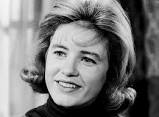My Radio Interview
Hi everyone!
It has been quite a while since I last posted on this blog. My apologies. Unfortunately, my time has been taken up with editing my newly released book, If You Should Read This, Mother, in addition to other writing projects. As those of you who have read my previous posts know, I am a huge fan of suspense, whether in film, tv, or books. I think If You Should Read This, Mother is quite suspenseful and is a great summer read.
The book is available on Amazon at https://www.amazon.com/You-Should-Read-This-Mother-ebook/dp/B07214BLW5/ref=sr_1_1?ie=UTF8&qid=1498410445&sr=8-1&keywords=If+You+Should+Read+This%2C+Mother as well as on the publisher’s website (www.blackopal.com) and bookstores.
I invite you all to tune in to The Kim Pagnano Show next Saturday 7/15, when Kim will be interviewing me about my book. The interview will be played between 7-8 PT on next Saturday on KVTA Radio 1590, and it will be posted on www.kimpaganoshow.com starting at 9:00 PT.
Hoping you’ll have a chance to listen and to spread the word and that you’ll be placing a copy of If You Should Read This, Mother in your beach bags this summer:
And you haven’t already read my first mystery, Groomed for Murder, it is available as an e-book at https://www.amazon.com/s/ref=nb_sb_noss?url=search-alias%3Daps&field-keywords=groomed+for+murder+by+Vivian+Rhodes&rh=i%3Aaps%2Ck%3Agroomed+for+murder+by+Vivian+Rhodes
Happy reading! Vivian










